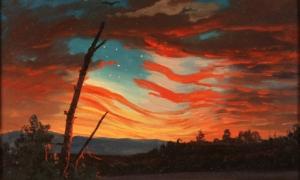‘War and Peace’ (1966–1967)

One of the most ambitious undertakings in the history of the film medium, director, co-writer, and leading-man Sergei Bondarchuk’s “War and Peace” has a running time of 431 minutes and was released in four parts between March 1966 and November 1967.
Still the most expensive Russian-produced film ever made, it went on to win multiple industry accolades, including the Golden Globe and Academy Awards for Best Foreign Language Film. The fact that it received so much love during the height of the Cold War (and was funded in part by the Soviet government) makes it all the more impressive.
‘Braveheart’ (1995)

Nominated for 10 Academy Awards and the winner of five (including Best Picture and Best Director), Mel Gibson’s sprawling epic depicting the start of the First War of Scottish Independence (1296–1328) struck a deep chord with critics and audiences alike.
Gibson stars as William Wallace, the Scottish nationalist and patriot who, prodded on by the murder of his new bride Murron (Catherine McCormack) at the hands of a British officer attempting to assault her, goes ballistic and decides to stand toe-to-toe with King Edward I, aka Longshanks (Patrick McGoohan).
Turning in invaluable support are Brendan Gleeson as Hamish, Wallace’s second-in-command, Angus Macfadyen as Robert the Bruce, and Sophie Marceau as Princess Isabelle of France, a moderator of sorts between Wallace and Longshanks.
Some (mostly exacting academics) have complained that Gibson and screenwriter Randall Wallace took too many “artistic liberties” with actual events, a point the former acknowledged. Gibson freely agreed to the historical inaccuracies but defends his choices as director, noting that the way events were portrayed in the film was much more “cinematically compelling” than the historical fact or conventional mythos.
‘Henry V’ (1989)

Set amid the backdrop of the Battle of Agincourt during the Hundred Years’ War, Kenneth Branagh’s “Henry V” is considered by most to be the finest cinematic adaptation of any Shakespearean play.
The first of what would eventually be five Shakespeare adaptations that Branagh would write, direct, and star in, “Henry V” is bursting with a level of brio and gusto generally not associated with Shakespeare movies, thanks in large part to the sterling supporting cast of British veterans and future stars.
Appearing in key roles are Paul Scofield, Derek Jacobi, Ian Holm, Judi Dench, Robbie Coltrane, Christian Bale, and Emma Thompson, who became Branagh’s real-life wife the same year the movie was released.
‘A Tale of Two Cities’ (1935)

The fifth of eventually seven feature adaptations of the Charles Dickens novel of the same name, director Jack Conway’s “A Tale of Two Cities” is by far the best of the lot.
In a role he had long coveted, Ronald Colman stars as lead protagonist Sydney Carton, a deeply flawed yet honorable man whose unrequited love for the married Lucie Manette (Elizabeth Allan) leads him to make an incredible, unselfish sacrifice.
Taking place many years before and during the decade-long French Revolution (1789–99), the film mirrors similar events depicted three years later in “Casablanca” while receiving two Academy Award nominations, including Best Picture.
‘Master and Commander: the Far Side of the World’ (2003)

Australian director Peter Weir (“Gallipoli,” “Witness,” “The Truman Show”) and his fellow countryman Russell Crowe combined forces for this fictional story set during the Napoleonic Wars (1803–15).
In condensing five installments from the 20 novels in Patrick O’Brian’s “Aubrey-Maturin” series, Weir and his co-writer John Collee delivered a water-based swashbuckling adventure reminiscent of “Mutiny on the Bounty” (both versions), “Captain Kidd,” “The Black Pirate,” “The Sea Hawk, “Bequest to a Nation,” and “Captain Blood” with significantly more bite.
Crowe stars as Captain Jack Aubrey opposite Dr. Stephen Maturin (Paul Bettany, Crowe’s co-star in “A Beautiful Mind,” released two years earlier), Aubrey’s confidant and the vessel’s physician.







